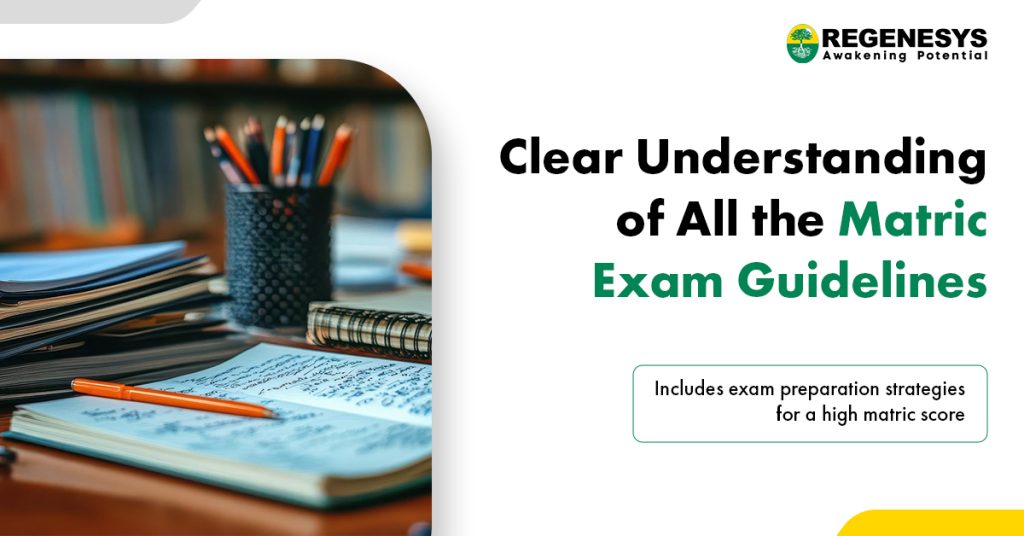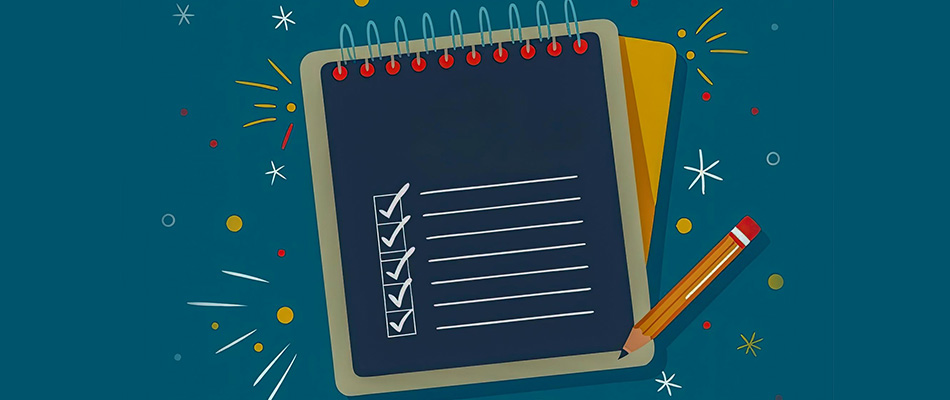The matric is one of the most important exams that grade 12 students appear for in South Africa. The scores from this exam help determine which higher-level path a student can follow. The matric exam score also forms part of universities and institutes’ requirements for prospective students. Understanding the exam guidelines can help students better understand the curriculum and how to dedicate their time to each subject.
This article will provide a deep understanding of the matric exam guidelines, a curriculum overview, and the best strategies for passing the exam with flying colours.
Table of Contents
Understanding Matric Exam
National Student Certificate (NSC), popularly known as the matric exam, is a compulsory examination for students in grade 12 in South Africa. Clearing the matric is the first step in pursuing higher education. This standardised test is part of the education system, and public and private school students need to appear for them. The final score for the matric is based 25% on School Based Assessment (SBAs) and 75% on the written exam.
The exam helps measure students’ knowledge and understanding of critical and elective subjects they choose. Students need to appear for a total of 7 exams, of which 4 are mandatory and 3 are electives. The compulsory subjects include two languages (including one home language), mathematics or mathematics literacy, and life orientation.
The exams are approximately 2 to 3 hours long and spread over 6 weeks in 2024. To gain a minimum pass, a student must pass at least 6 subjects and score the following:
- 40% or higher for the home language
- 30% or higher for 2 subjects
OR
- If students fail one subject, including the home language, then 30% or higher for the 6 remaining subjects, students need an average of 33.5% to receive a pass.
However, students should study hard and prepare well to score high on all subjects. Those who score higher are awarded different levels of pass, such as bachelor’s, diploma, and certificate, which paves the way for following the path to higher education.

Curriculum Overview
The matric exam curriculum promotes equality and increases access to basic education in South Africa. The final curriculum is based on the National Curriculum Statement (NCS) and Curriculum and Assessment Policy Statement (CAPS) framework.
The curriculum is designed to incorporate various fields of study, including dramatics and tourism. This offers a well-rounded approach to education and introduces students to diverse fields of higher education. To be effective, the programme is also regularly reviewed and updated to match the needs of current students.
The curriculum is set to prepare South African students to contribute to the national economy by developing knowledge and skills.
Programme and Promotion Requirements
Students must adhere to the matric exam guidelines to prepare for these exams successfully. The requirements for each subject vary depending on the needs of the course. For example, language subjects require students to have native-level proficiency in listening, speaking, and writing skills to score well in the exam. Students who appear for computer applications technology should be skilled in HTML, understand databases, and be able to operate computer programmes.
The matric exam guidelines are designed to include compulsory subjects such as mathematics and language along with elective subjects that demonstrate a student’s interest in a future career path.
To appear for the matric exams, students should complete the projects and clear the exams for grade 11. Similarly, to be promoted to grade 11, they should have passed grade 9. This ensures that students are receiving a quality education that is comparable to the level of education students receive in other countries.
Teaching and Learning Process
Since the final matric exam score also considers SBAs, teachers need to plan their curriculum to keep it exciting and interactive for the students. This allows students to be a part of the teaching process and demonstrates to them that their opinions are valued.
Teachers must follow the matric exam guidelines to ensure all course material has been well covered. They should also hold regular evaluations or assign practical projects that allow students to apply the theories they have learned in class. This will help them better understand the subject and prepare for the matric exams.
A practical approach to education creates a more conducive learning environment than a structure in which students simply learn facts and theory.
Exam Preparation Strategies
After studying the curriculum in school, students must work extra hours to review the material and test their understanding of the concepts. The Department of Basic Education releases the matric exam schedule months in advance, which offers students, teachers, and parents ample time to devise the most effective exam strategies.
These are some pointers students can consider when preparing for the matric:
- Organise a realistic study schedule: Even before the timetable has been released, students can divide the number of days they will spend on each subject. They should try to spend slightly more time on high-priority subjects for their future programme choice.
- Study the subject material from school notes: Once students have divided their days, they should cover course matters from their textbooks and notes.
- Gain a deeper understanding of the subjects: Students can gain a deeper understanding by reviewing external textbooks or suggested notes. These will help clarify some concepts and provide a more detailed understanding.
- Practice and revise: Students should begin revisions and self-testing after understanding the subject matter. This can be oral revisions or solving past exam papers. This will explain how well a student understands the concepts and the matric exam curriculum.
- Clear doubts: If students still have any doubts after solving past papers, they should ask their teachers to review the concept one more time.
- Final revisions: A week or so before examinations begin, students should only revise concepts they have studied. At this stage, they should avoid including new study material.
While students follow the matric exam guidelines to prepare themselves, they must also remember to stay positive and to create a favourable learning environment. Students should:
- Study in a quiet and calm place.
- Students should not leave studying until the last minute
- Students should take regular breaks.
- They should also spend some time away from the books exercising or playing a sport.
External factors can come into play and must always be considered when designing an effective study strategy for the matric exams. Remember to stay calm and in a positive mindset for the duration of the exams.
Assessment Policy
The matric exam guidelines define the final score as 25% from the SBA and 75% from the written paper. The final percentage score for each subject is a combined weightage of both scores. The NSC score helps to determine which level of pass a student has gained, depending on the percentage score for each category.
The National Protocol of Assessment (NPA) sets the scoring for exams and assessments that schools can undertake. The Assessment Policy Statement (APS) further supports this, guiding schools on gradings and exam conduct.
Both fall under the Department of Basic Education and are present to ensure transparency in the examination process. They also help bring all schools under one rule and guidance structure to demonstrate equality in the education system.
Understanding the Question Paper
The best way to prepare for the matric exam is to solve past question papers. This will help students understand the exam pattern and the weightage given to multiple-choice, short, and long answers. The matric exam guidelines dictate the structure of the paper and solving past exams will give students an understanding of what to expect when they appear for the matric.
Before starting to write, students should read the entire paper and clear any doubts. They should also answer questions based on the marks allocated; for example, a one-point answer should only be a couple of sentences. Students should also read the question carefully and ensure they answer each element if it is broken down into parts.
Subject-Specific Guidelines
The matric exam guidelines include subject-specific instructions that help prepare students for the subject thoroughly. Language exams for English, for example, test students on reading and writing skills and their in-depth understanding of literature and language.
For science, students should clearly understand the concepts and be able to apply that learning to solve problems and provide solutions. For mathematics, students should build a conceptual understanding and be able to solve complicated problems. They should cover topics such as algebra, calculus, and finance. Students should understand the theory for all subjects and develop a keen understanding of how to apply it to crack the questions.
Post-Exam Procedures
Once the exams are complete, students can compare answers with other students, but they mainly have to wait for the results. These are released in January of the following year and are available online on the Department of Education’s website and offline at the exam centre.
Students who are satisfied with their results can begin applying to higher education programmes of their choice, depending on the pass level achieved. Students who are not satisfied with their scores can submit their papers for re-checking. Students who fail a subject can re-write the exam the following year under the second chance matric programme.
Students who pass the matric exam are awarded a National Qualification Framework (NQF) Level 4, which allows them to apply for courses in higher education.
Resources and Support
The DBE sets the matric exam guidelines and papers, and it is the number one resource for students when it comes to preparing for the exams. Students can use the website to access the matric exam timetable, download past exam papers, and access study guides.
It is also an excellent source of information for understanding the curriculum and the scoring guidelines in detail.
Conclusion
The matric is the most important exam that students need to prepare for, as it sets the course for their future. Students and parents must understand the course structure and devise a clear plan to meet the study targets that they have set for themselves.
The matric exam guidelines were developed and are constantly updated to provide equal education opportunities to students across South Africa. They ensure that all schools and exam centres follow the same guidelines to provide a fair testing environment for all.
For more insights, visit Regenesys’ Reginsights page today!
FAQs on Matric Exam Guidelines
Where can I find details about the matric curriculum?
Students can find more details regarding the curriculum and the matric exam guidelines on the Department of Basic Education website.
Should I solve past papers to prepare for the matric exam?
Solving past papers is important, as it gives students an idea of the type of questions they will be asked in the examination. Past exams can be downloaded from the Department of Basic Education website.
How are the matric exams scored?
The matric exams are scored based on the SBAs completed in school and the written exam students sit for in October.
Where can I check the score of the matric exam?
Exam results are released in January, and students can check their results online at the Department of Basic Education website and offline at their exam centre.
How many subjects do I need to study for the matric exam?
Students need to appear for 7 subjects, out of which are mandatory.
Are the matric exams multiple-choice?
The exams combine multiple choice, short and long answer types. Students should practice past exam papers to understand the paper structure better.






